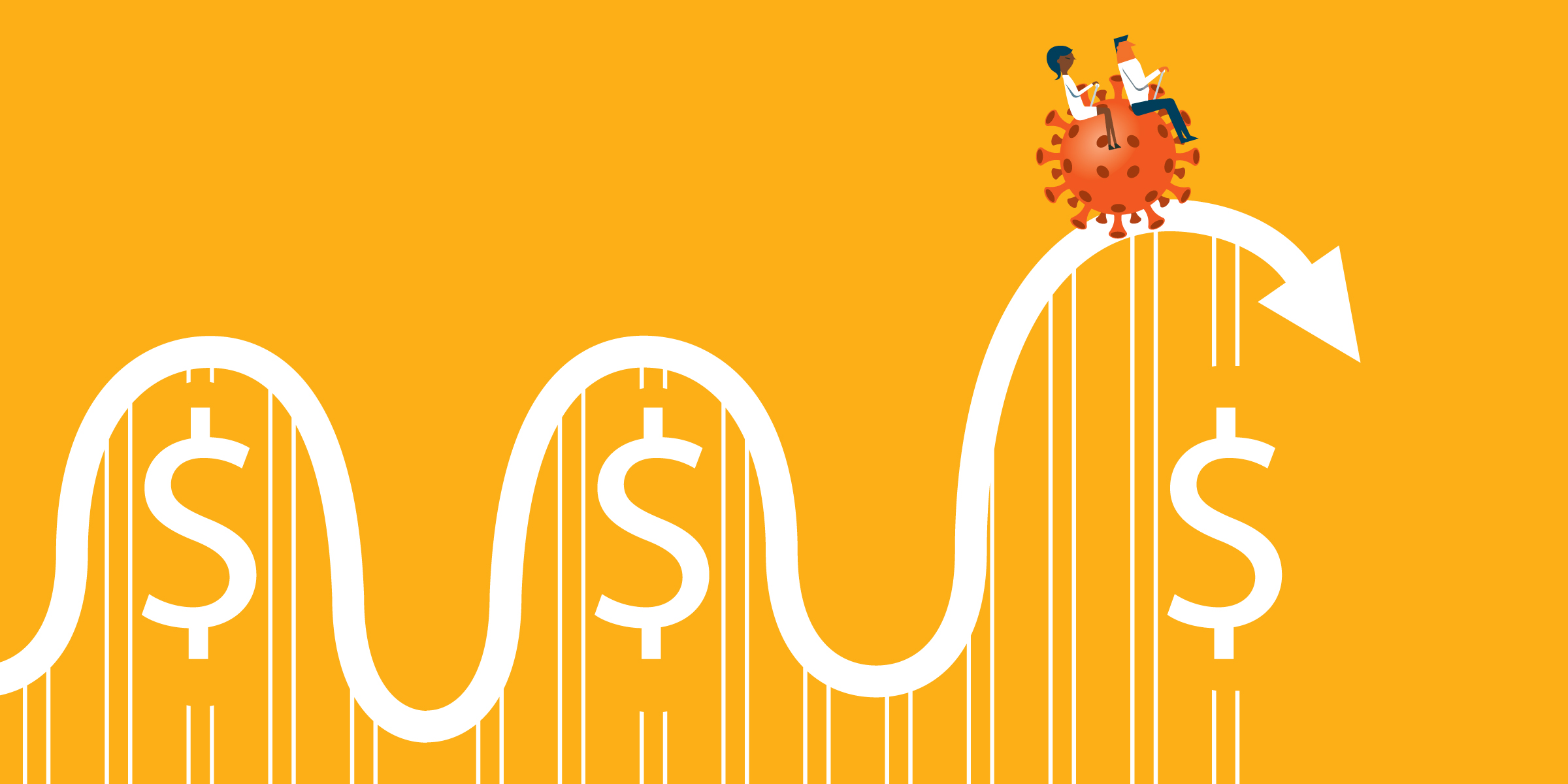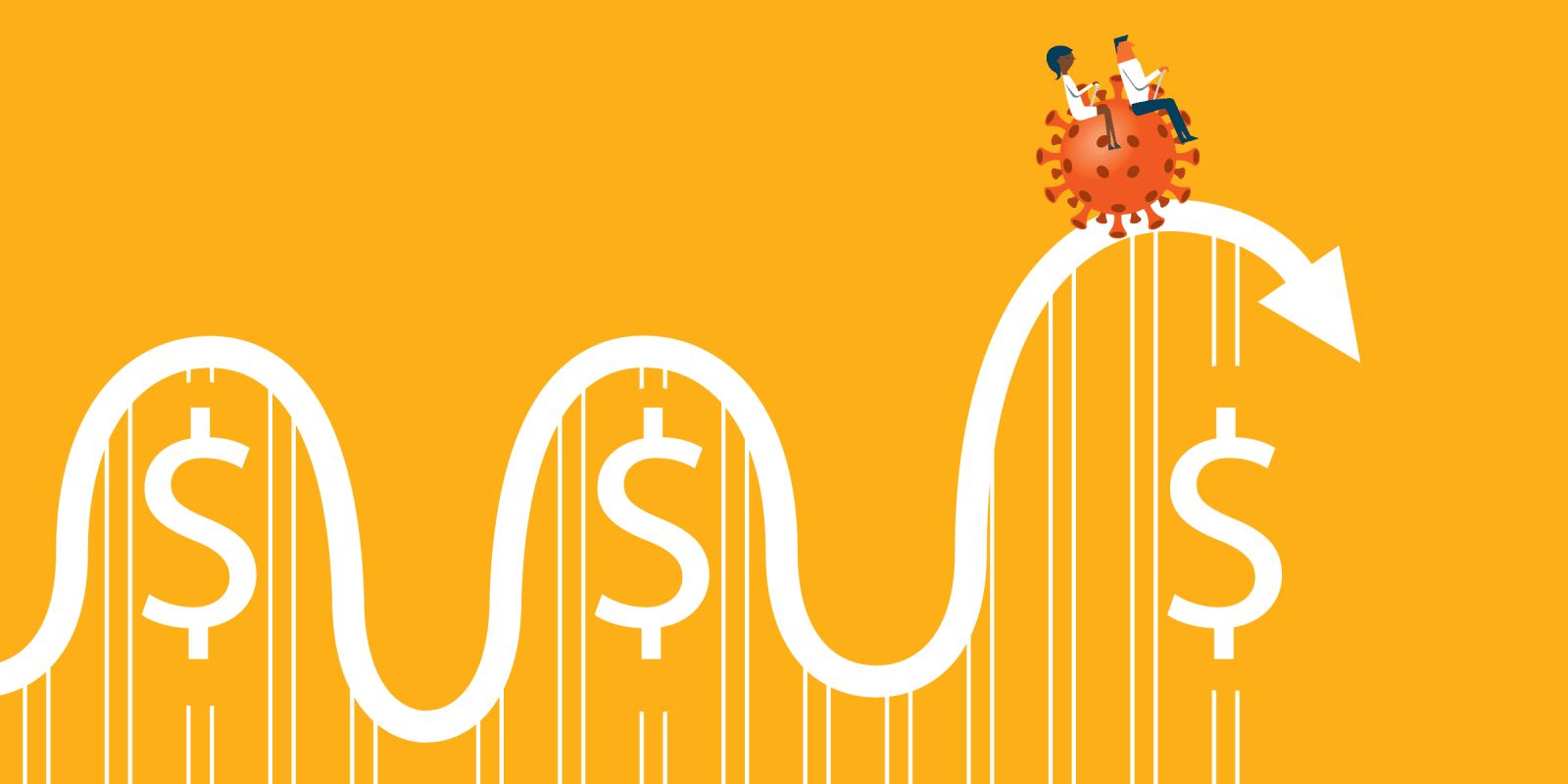 In the past few weeks, physicians have been through an emotional roller coaster ride related to professional duty, social isolation, changing protocols, and the "business of medicine."
In the past few weeks, physicians have been through an emotional roller coaster ride related to professional duty, social isolation, changing protocols, and the "business of medicine."
The operating expenses for an independent physician practice are higher, due to higher rent premiums and malpractice insurance. Doctors are in uncharted territories complying with CDC guidelines for outpatient facilities. The outpatient clinics have suspended non-urgent visits, surgeries, and office procedures.
There are ancillary health care companies that depend on the physician's examination of a patient. Attending the needs of an independent physician practice is crucial in stopping the "economic ripple effect” in health care practices caused by the coronavirus.
Dr. Matthew Goldstein, an electrophysiologist, is concerned about the survival of independent private physician practices. It is an often overlooked fact that physicians in private practices are small business owners. The independent practices might not be able to stay financially solvent beyond the first month. His colleagues have adapted to the current situation by shutting down their physical offices except for emergencies, consulting on inpatients, scaling up telehealth, and keeping the staff on payroll while taking a pay cut themselves. Dr. Renu Joshi, an ob/gyn, is in her first year of solo private practice. She is concerned about bookkeeping and expenses in the next few months. She worked for a sizable university-based health care system in the last fiscal year and has not filed tax returns for her new practice under her unique NPI. Thereby, her solo practice has not qualified for financial aid under the stimulus.
The Cardiology Consultants of Philadelphia is an independent organization representing independent cardiologists like Dr. Goldstein. Their dedicated management team is advocating for telehealth pay parity. Doctors have invested in telehealth resources and have quickly incorporated video telehealth into their practice; however, patients are not embracing it. Dr. Goldstein explained that there is a steep learning curve with the use of technology in elderly patients. As non-essential services have shut down, patients have not had a haircut and are in pajamas. Many patients prefer a telephone call so that they do not have to expose their living conditions to their physicians. The reimbursements for phone televisits are significantly lower, though the doctor has invested the same time and resources. Dr. Goldstein hopes that CMS warms to the idea of telehealth delivered through phone consults in these unprecedented situations and in the future. Dr. Joshi's clinic offers televisits, however, she is not sure if she will get reimbursed for her services. Despite that, she is very enthusiastic and states, “I am licensed to offer telemedicine in Pennsylvania and be available to my patients.” Without the backing of an organization, her practice is discovering the contracting nuances of telehealth reimbursement.
Some physicians aren’t waiting for organizations, but taking matters into their own hands. Dr. Nisha Mehta, a radiologist in North Carolina, runs an online physician networking group and in conjunction with Drs. Carlos and Karla Vital, spearheaded the COVID-19 Pandemic Physician Protection Act petition. Dr. Mehta emphasises that “the petition was written after taking the input from over 100k physicians in grassroots online physician communities and addresses the key areas where physicians need help and asks for support in the war against the COVID-19 pandemic.”
The petition addresses the key areas where physicians need help and asks for support in the war against the COVID pandemic. The petition demands that physicians have adequate tools such as PPE when enlisted for professional duty. It appeals to cover disability insurance for physicians and other healthcare workers who have succumbed to the illness or suffer long term consequences from COVID-19 exposure while working. Health care systems have repurposed physicians to handle the COVID surge. To help with the wave, doctors have practiced outside their scope of board specialty during the pandemic. The petition demands that physicians are protected from malpractice lawsuits during the COVID-19 pandemic so that physicians are not worried about being sued while providing care.
In addition to doctors worrying about getting paid and getting sued, some also have to worry about getting deported. Dr. Joshi, a co-founder of a social media group with more than 5,000 South-Asian physicians, is concerned about non-resident physicians employed by independent practices. Health care workers on visas have been furloughed and are in dire financial crisis without a paycheck. Homeland Security demands explanations when there is a gap in paycheck history. The non-resident physicians on a visa are under the added stress of deportation during their visa renewal, from unprotected immigration policies.
COVID-19 Collaterals
In a public health emergency, such as the COVID-19 pandemic, gaps in care emerge in several emergency plans. Health care systems implement crisis care planning, and the health care system adopts the crisis standards of care, whereby the goal is to provide the best care with the limited resources available. Social distancing was one such unconventional response to manage surge capacity.
As a result, like other professions, physicians have lost jobs, taken pay cuts, and been furloughed, yet they are at the forefront of pandemic control. As per the physician practice arrangements survey in 2018, 45.9% of physicians are practice owners. The unintended consequence of social distancing for physicians is the inability to maintain financial solvency. Physician practices are in a cash flow crisis, and this is independent of the physician's net worth. The CARES Act fell short on several fronts: no exemption for health care providers from the $100K threshold for debt forgiveness and no mention of extended payment terms for third party vendors in the medical supply chain until the practice receives reimbursement. The officials do not have a comprehensive survey to count the health care workers who lose their lives saving others in the pandemic. Medical experts and researchers are analyzing emerging data and providing guidelines; however, new information is available every day. The crisis standards of care increase the liability exposure for health care practitioners, as the rules of medical care are evolving. The physician requirements for job, liability, and risk protection have to be considered and re-written for public health emergencies.
Physicians need legislative support to continue practicing in a high exposure medical liability landscape. Addressing these key concerns now will be a galvanizing moment for the post-COVID times.
Nita K. Thingalaya, MD, BCMAS Dipl ABOM, is a Board-certified Internist, who specializes in Medical Affairs and Obesity Medicine. She practices telehealth and hospital medicine. She is currently the Medical Director in Healthcare Utilization. Her diverse experience in clinical research, utilization, and informatics make her a leader in Medical Affairs. The article is independent of her affiliations past or present. Dr. Thingalaya is a 2019-2020 Doximity Fellow.
Illustration Collage by Jennifer Bogartz / sorbetto / Getty
Click here to see more perspectives on COVID-19 from the Doximity network.
Click here for up-to-date news about COVID-19 on Doximity.







